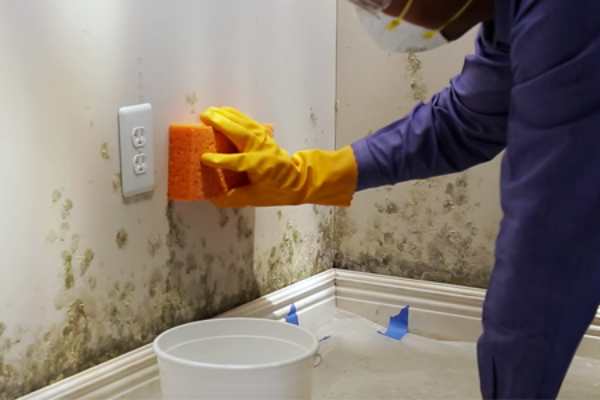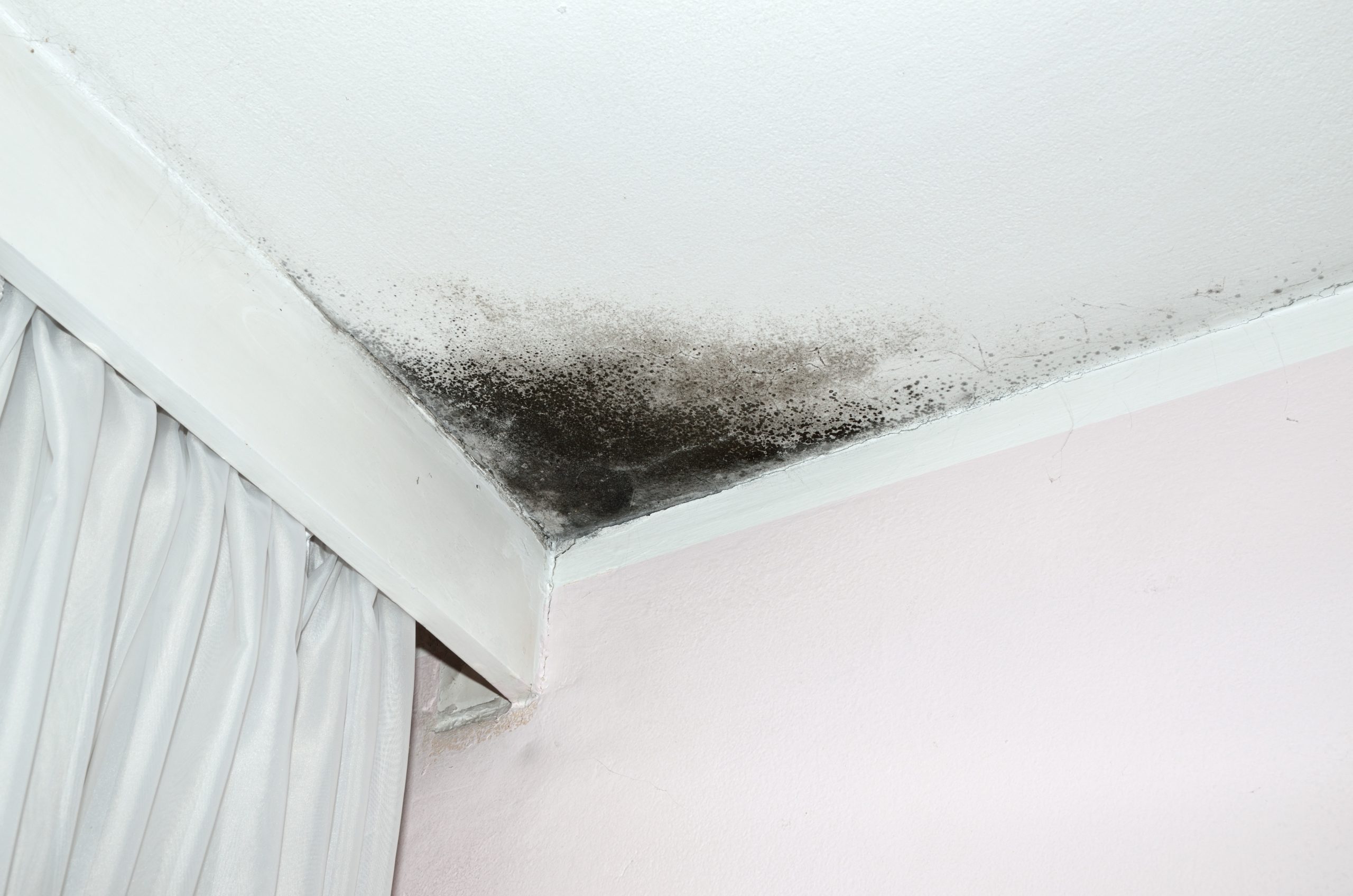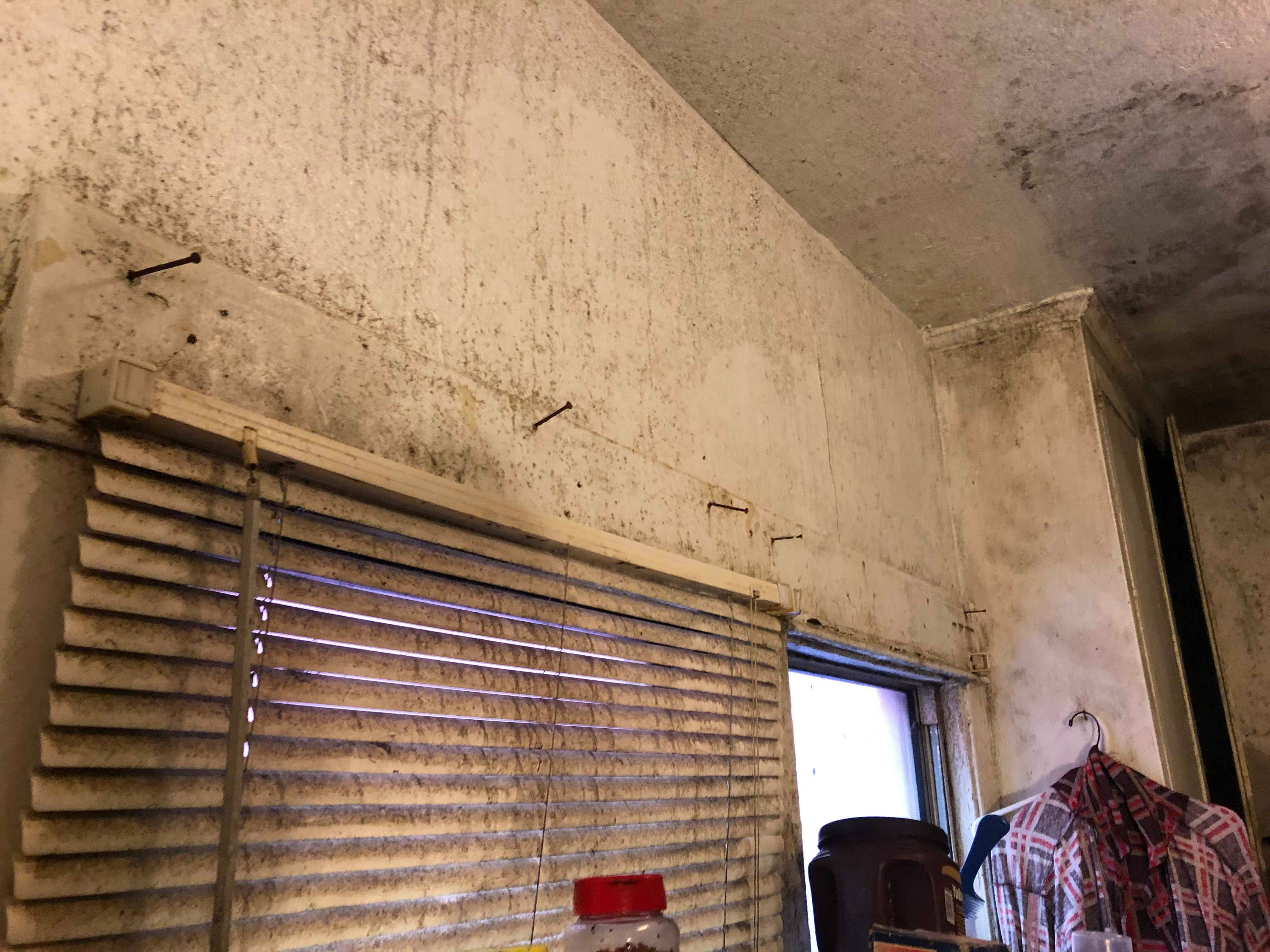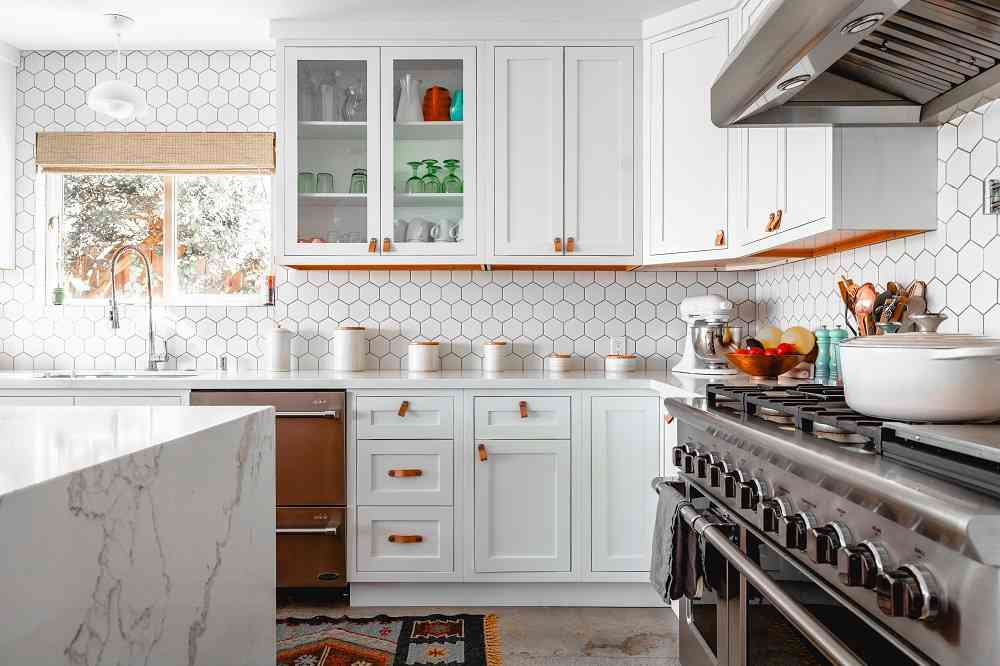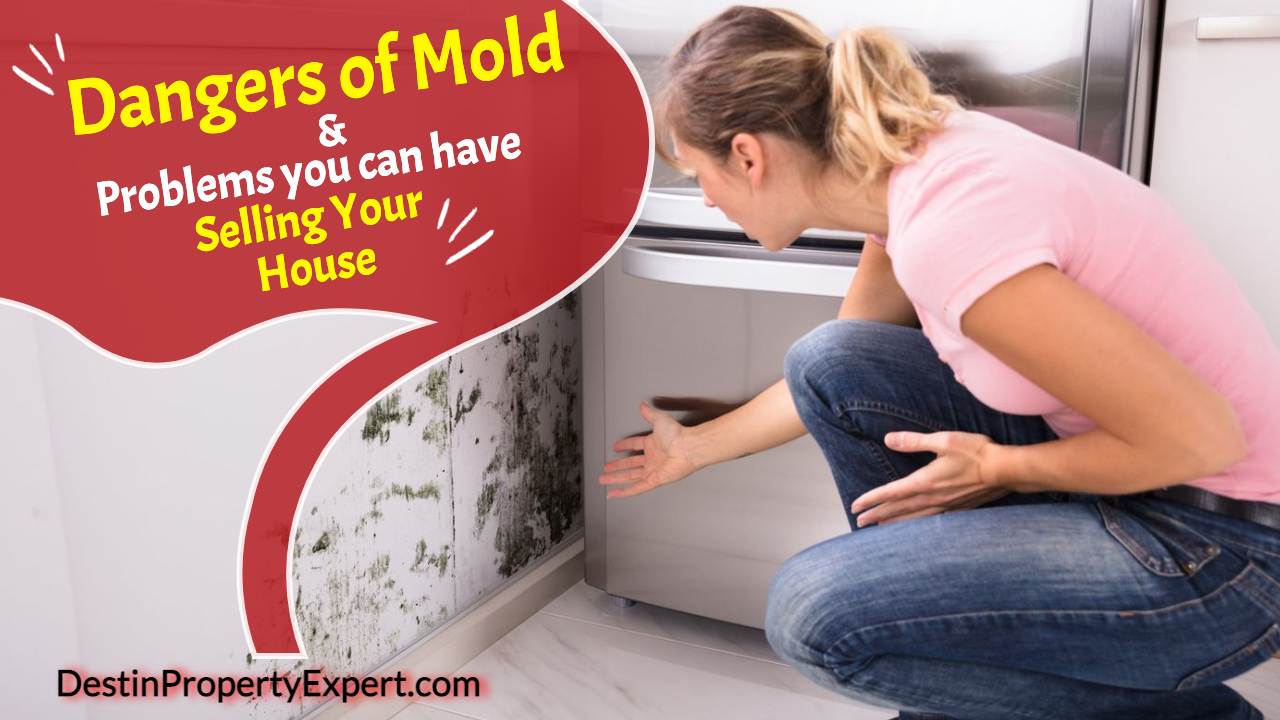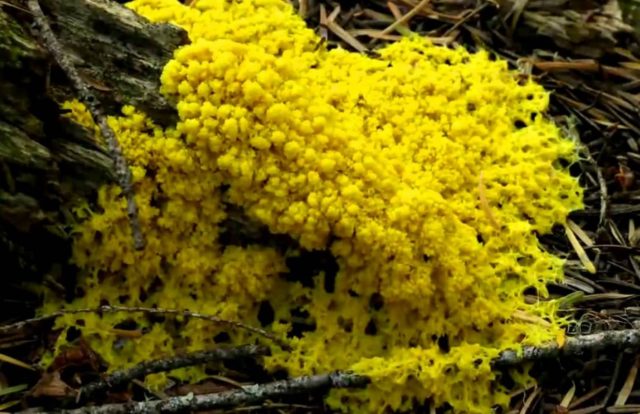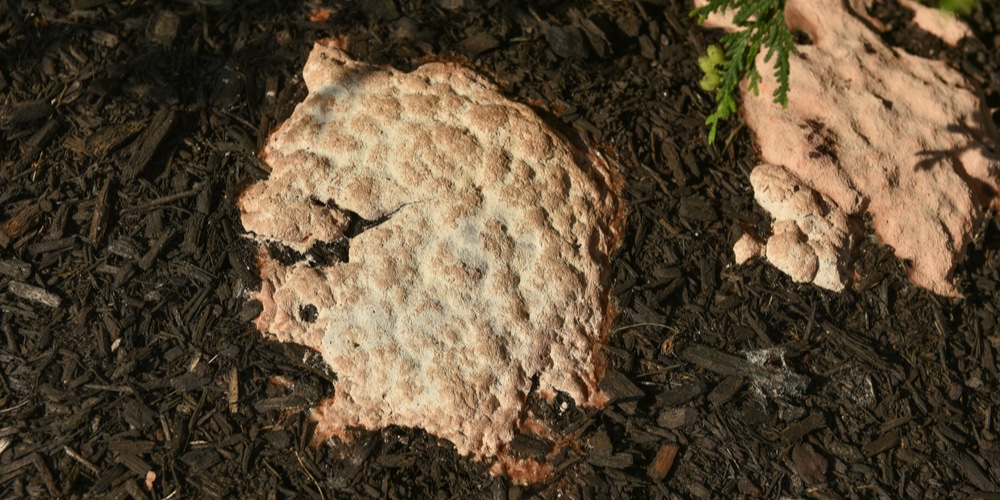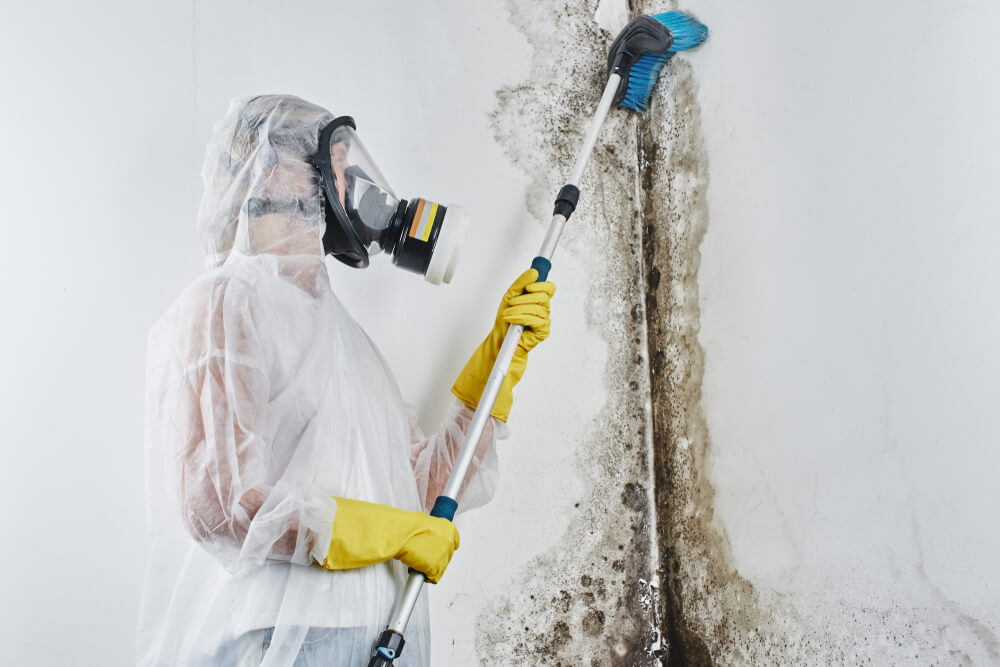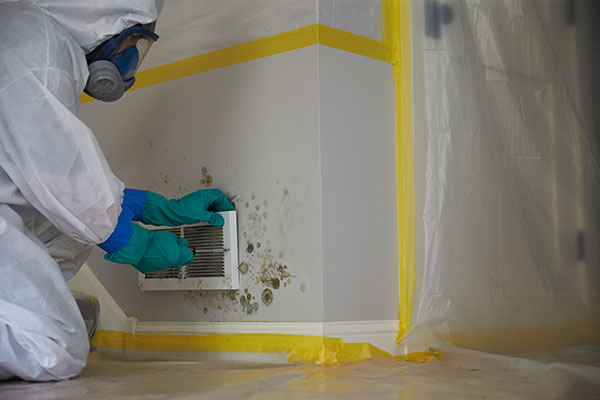Yellow mold is a common problem that many homeowners face, especially in the kitchen. This unsightly growth can be found on walls, countertops, and even on food items. Not only is it an eyesore, but it can also be harmful to your health. If you've noticed yellow slimy mold on your kitchen walls, don't panic. With the right techniques and tools, you can easily remove it and prevent it from coming back. Here's how:How to Remove Yellow Slimy Mold from Kitchen Walls
The first step in removing yellow slimy mold from your kitchen walls is to identify it. Yellow mold is a type of fungus that thrives in warm, moist environments. It can appear as a yellowish-green or mustard-colored growth, and it has a slimy texture. When left untreated, it can spread quickly and cause damage to your walls and other surfaces. To treat yellow mold, you can use a mixture of equal parts water and white vinegar. Simply spray the solution onto the affected area and let it sit for a few minutes before wiping it away with a cloth. For tougher mold stains, you can also use a mixture of baking soda and water to scrub the area clean.Identifying and Treating Yellow Mold in Your Kitchen
Prevention is key when it comes to yellow mold in your kitchen. To prevent it from growing, make sure to keep your kitchen clean and dry. Wipe down surfaces regularly, and fix any leaks or water damage as soon as possible. You can also invest in a dehumidifier to reduce the moisture levels in the air, which will discourage mold growth.Preventing Yellow Mold Growth in Your Kitchen
If the mold growth on your kitchen walls is particularly stubborn, you may need to use stronger cleaning solutions. Bleach is a powerful mold killer and can help remove yellow mold from walls. Mix one part bleach with three parts water and spray it onto the affected area. Let it sit for 10-15 minutes before wiping it away. Be sure to wear protective gloves and a mask when using bleach. Another effective cleaning solution is hydrogen peroxide. This natural disinfectant is safe and easy to use. Simply spray it onto the moldy area and let it sit for 10-15 minutes before wiping it away. You can also use a mixture of tea tree oil and water to kill and prevent mold growth.Effective Ways to Clean Yellow Mold from Kitchen Walls
Yellow mold may seem harmless, but it can actually pose serious health risks. Mold spores can irritate the lungs and cause respiratory issues, especially for those with allergies or weakened immune systems. Prolonged exposure to mold can also lead to more severe health problems, so it's important to address it as soon as you notice it. If you have a large mold infestation or are experiencing symptoms related to mold exposure, it's best to seek professional help. A mold removal specialist can assess the situation and safely remove the mold from your kitchen walls.Understanding the Dangers of Yellow Mold in Your Kitchen
For smaller mold problems, there are many DIY solutions you can try to remove the mold from your kitchen walls. Some natural remedies include using a mixture of borax and water, or a combination of vinegar and baking soda. These ingredients are non-toxic and safe to use, making them a great alternative to harsh chemical cleaners. Another DIY solution is to create a paste using equal parts water and baking soda. Apply the paste onto the moldy area and let it sit for 10-15 minutes before scrubbing it away with a brush. This can help remove the mold and also absorb any lingering odors.DIY Solutions for Removing Yellow Mold from Kitchen Walls
If you prefer to use natural remedies, there are many options available to get rid of yellow mold in your kitchen. One of the most effective is using grapefruit seed extract. This natural antifungal agent can be mixed with water and sprayed onto the affected area to kill mold spores. You can also use essential oils, such as lavender, eucalyptus, or clove, as natural mold killers. Simply mix a few drops with water and spray it onto the moldy area. These oils not only kill mold but also leave a pleasant scent behind.Using Natural Remedies to Get Rid of Yellow Mold in Your Kitchen
For larger or more severe mold infestations, it's best to seek professional help. Mold removal specialists have the tools and expertise to properly remove mold from your kitchen walls and prevent it from coming back. They can also identify the source of the mold and address any underlying issues, such as a leak or poor ventilation. Professional mold removal services may be more expensive, but they ensure that the mold is completely removed and your kitchen is safe and healthy to use.Professional Mold Removal Services for Yellow Mold in Kitchens
If you're removing mold from your kitchen walls, you may also need to dispose of any damaged or moldy materials, such as wallpaper, drywall, or cabinets. These materials can harbor mold spores and continue to spread the mold if not properly disposed of. To dispose of mold-infested materials, it's important to seal them in plastic bags before taking them out of your home. This will prevent the mold spores from spreading to other areas. It's also important to wear protective gear, such as gloves and a mask, when handling moldy materials.How to Properly Dispose of Yellow Mold-Infested Materials in Your Kitchen
The best way to prevent yellow mold from growing in your kitchen is to address any underlying issues that may be promoting its growth. Make sure your kitchen is properly ventilated, and fix any leaks or water damage as soon as possible. Regularly cleaning and maintaining your kitchen will also help prevent mold growth. In addition, it's important to keep an eye out for any signs of mold in your kitchen, such as a musty odor or discoloration on walls or surfaces. Catching mold early can help prevent it from spreading and causing damage to your home and health. In conclusion, yellow slimy mold on kitchen walls is a common problem that can be easily treated and prevented. By following these tips and techniques, you can keep your kitchen mold-free and ensure a safe and healthy environment for you and your family.Preventing Future Yellow Mold Growth in Your Kitchen with Proper Ventilation and Maintenance
The Dangers of Yellow Slimy Mold on Your Kitchen Walls

What is Yellow Slimy Mold?
 Yellow slimy mold, also known as Stachybotrys chartarum, is a type of mold that commonly grows in damp and humid environments. It is characterized by its yellowish-green color and slimy texture, making it easily recognizable. This type of mold can grow on various surfaces, including walls, ceilings, and even food.
Yellow slimy mold, also known as Stachybotrys chartarum, is a type of mold that commonly grows in damp and humid environments. It is characterized by its yellowish-green color and slimy texture, making it easily recognizable. This type of mold can grow on various surfaces, including walls, ceilings, and even food.
Why Does it Grow on Kitchen Walls?
 Our kitchens are often the most used room in our homes, and therefore, it is not surprising that it can also be the most vulnerable to mold growth. Kitchens are often exposed to moisture, whether from cooking, washing dishes, or even spills. When combined with warm temperatures, this creates the perfect breeding ground for mold to grow, including yellow slimy mold.
Our kitchens are often the most used room in our homes, and therefore, it is not surprising that it can also be the most vulnerable to mold growth. Kitchens are often exposed to moisture, whether from cooking, washing dishes, or even spills. When combined with warm temperatures, this creates the perfect breeding ground for mold to grow, including yellow slimy mold.
The Dangers of Yellow Slimy Mold
 While all types of mold can be harmful to our health, yellow slimy mold is particularly dangerous due to its production of mycotoxins. These toxins can cause a range of health issues, including respiratory problems, headaches, and even neurological symptoms. If left unchecked, yellow slimy mold can also cause structural damage to your kitchen walls and compromise the structural integrity of your home.
While all types of mold can be harmful to our health, yellow slimy mold is particularly dangerous due to its production of mycotoxins. These toxins can cause a range of health issues, including respiratory problems, headaches, and even neurological symptoms. If left unchecked, yellow slimy mold can also cause structural damage to your kitchen walls and compromise the structural integrity of your home.
How to Prevent and Remove Yellow Slimy Mold
 The key to preventing yellow slimy mold growth on your kitchen walls is to control moisture levels. This can be achieved by regularly cleaning and drying any spills or moisture buildup. It is also essential to fix any leaks or water damage immediately. Additionally, using a dehumidifier can help keep humidity levels in check.
If you do find yellow slimy mold on your kitchen walls, it is best to call a professional mold remediation service. They have the expertise and equipment to safely remove the mold and prevent it from spreading further. It is crucial to address the issue promptly to protect your health and prevent any further damage to your home.
In Conclusion
Yellow slimy mold is not something to take lightly, especially when it is found on your kitchen walls. It not only poses a threat to your health but also to the structure of your home. By taking preventive measures and addressing any mold growth promptly, you can protect yourself and your home from the dangers of yellow slimy mold.
The key to preventing yellow slimy mold growth on your kitchen walls is to control moisture levels. This can be achieved by regularly cleaning and drying any spills or moisture buildup. It is also essential to fix any leaks or water damage immediately. Additionally, using a dehumidifier can help keep humidity levels in check.
If you do find yellow slimy mold on your kitchen walls, it is best to call a professional mold remediation service. They have the expertise and equipment to safely remove the mold and prevent it from spreading further. It is crucial to address the issue promptly to protect your health and prevent any further damage to your home.
In Conclusion
Yellow slimy mold is not something to take lightly, especially when it is found on your kitchen walls. It not only poses a threat to your health but also to the structure of your home. By taking preventive measures and addressing any mold growth promptly, you can protect yourself and your home from the dangers of yellow slimy mold.








